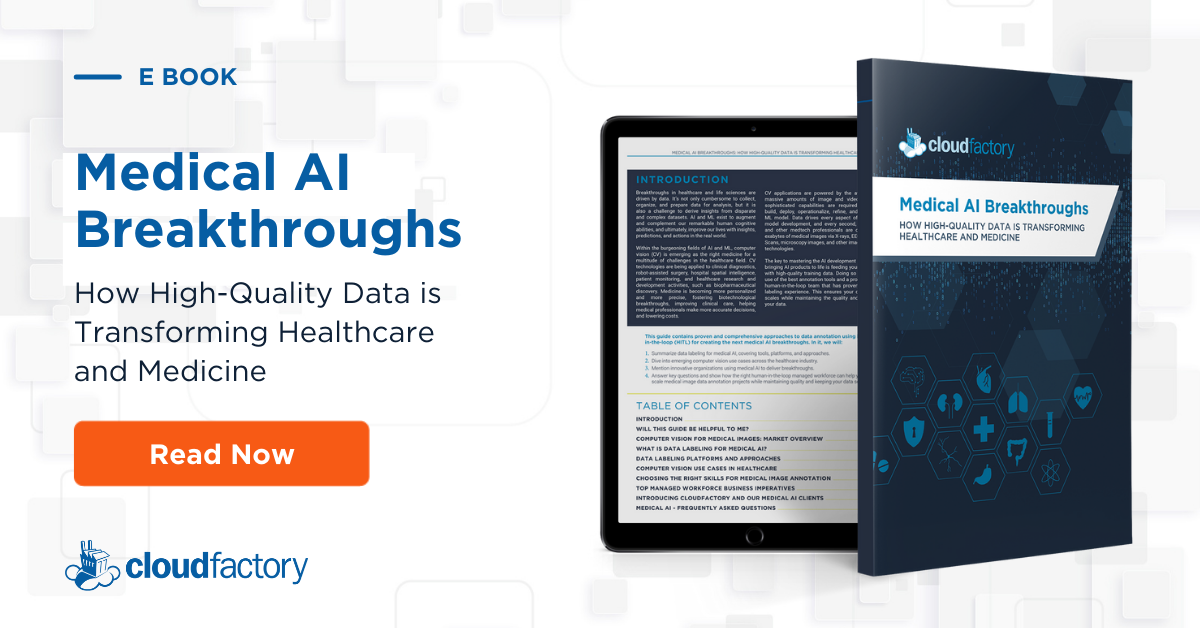Data annotation is an important part of the artificial intelligence (AI) lifecycle. Machine learning algorithms, especially computer vision solutions, require massive amounts of precisely labeled training data in order to accurately interpret real-world data. Healthcare innovators often turn to doctors for data labeling help but that's not the most efficient or cost-effective option.
Here are four reasons that doctors shouldn't waste time on tedious data labeling and a workforce solution that can help accelerate medical AI data annotation pipelines.
1. Doctors are already doing the work of 10 people.
Even before the COVID-19 pandemic set in, the U.S. faced a growing shortage of doctors and other medical care providers. According to the Association of American Medical Colleges, the U.S. will face a shortage of up to 122,000 physicians by 2032.
AI reduces time-consuming, repetitive tasks and supports decision-making in areas like clinical diagnostics, robot-assisted surgery, and patient monitoring. AI adoption may even expand employment and increase wages.
2. You have to annotate how many images & videos?
Every year in the U.S., patients undergo 40 million MRI scans, 80+ million CT scans, and 152+ million X-rays. And millions of other images are generated through other means, like operating room robots and medical research and development.
It takes upwards of 800 hours to annotate one hour of video for training data. Data-hungry computer vision models require a lot of high-quality, precisely labeled data. Lives depend on medical AI and quality data requires focused labelers.
3. Doctors should be focused on patients.
Your internal team might know how to identify cancer cells, but that doesn’t mean they should label data. Dropping tedious annotation chores on medical professionals leads to discontent, burnout, and, eventually, compromised training data quality.
AI won’t replace doctors. AI can’t empathize, respond with compassion, or use intuition. Doctors should adopt AI tools, not train them one bounding box at a time.
4. Time is money. And innovation can’t wait.
A medical AI company contracted several physicians to label data during their off-work hours. Each medical consultant charged around $150 an hour and the doctors were able to annotate only 10K images in 6 months—for a hefty fee.
Complex deep learning algorithms often require 100K+ pieces of precisely labeled training data. It would take those consulting physicians 5+ years to complete what CloudFactory’s annotation workforce can do in weeks.
Read CloudFactory's Guide to Medical AI to discover how high-quality data is transforming healthcare and how CloudFactory can help you liberate doctors while accelerating AI development.



